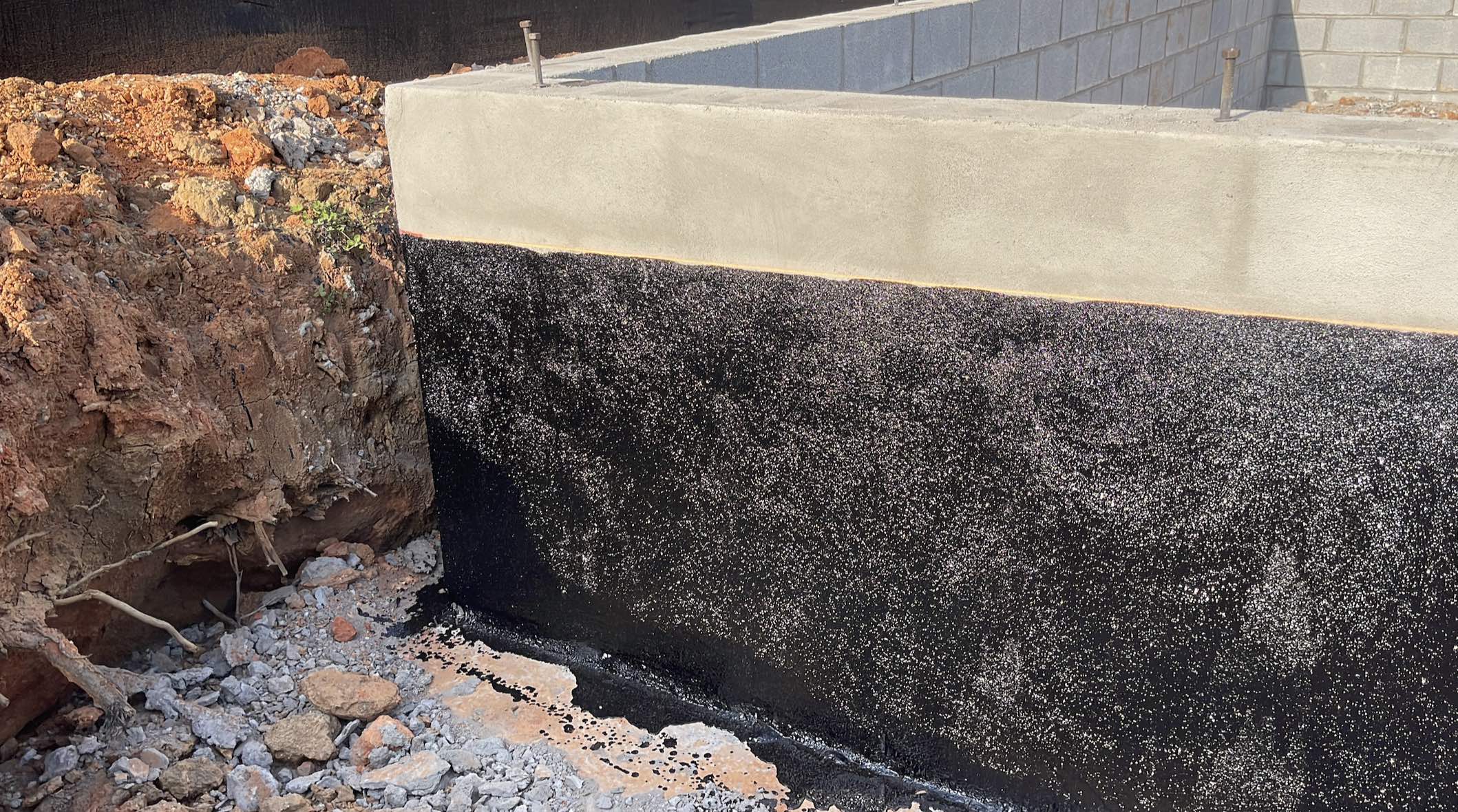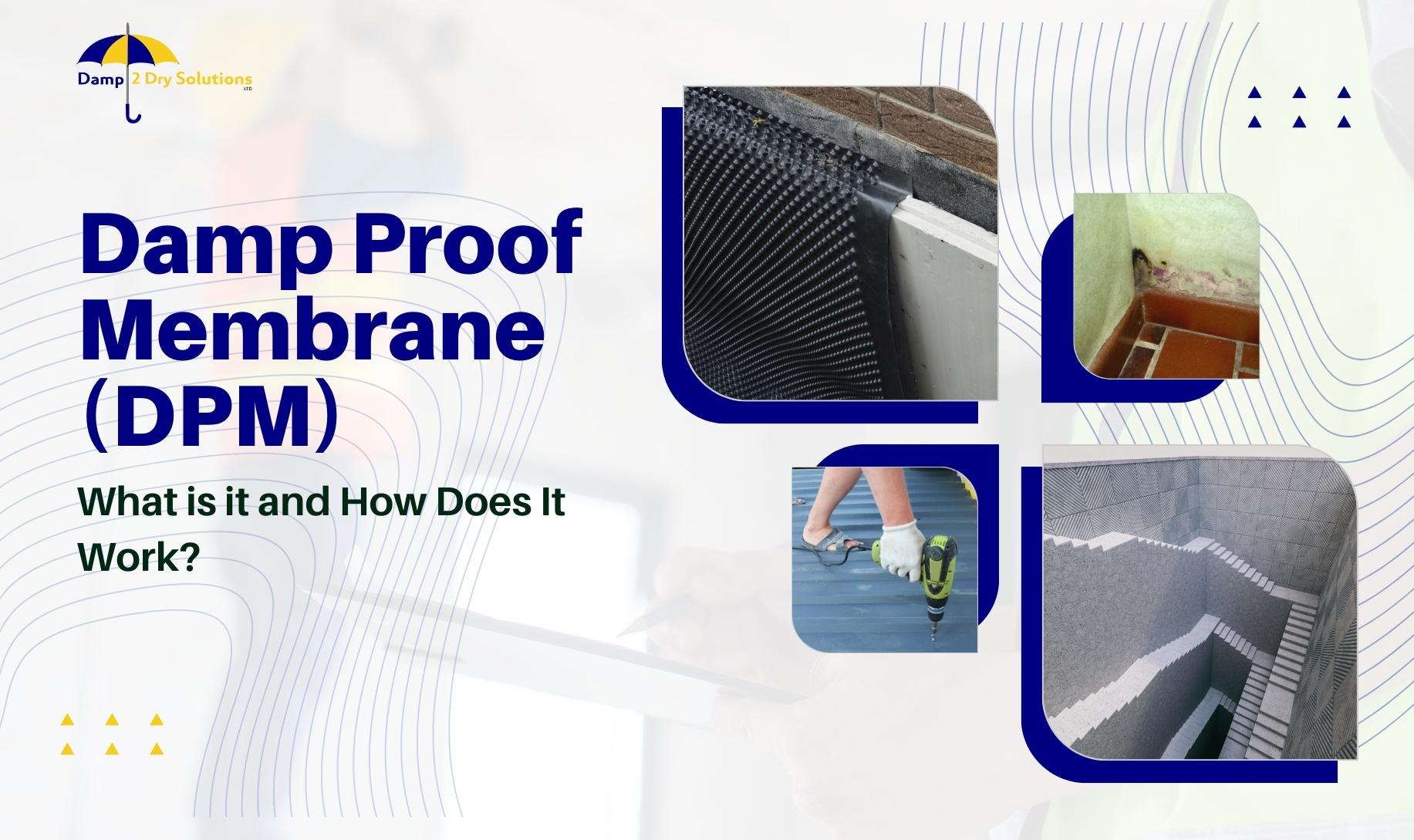Exploring the Different Strategies and Solutions for Effective Damp Proofing
Dampness in buildings presents substantial obstacles to both structural honesty and interior air high quality. Numerous methods and remedies have arised to combat this prevalent issue. From traditional damp-proof membrane layers to ingenious chemical therapies, each approach offers distinct advantages. Recognizing these options is vital for effective wetness control. Nevertheless, selecting the best solution depends upon specific building problems and requirements, prompting more exploration into one of the most efficient moist proofing approaches readily available.
Understanding the Causes of Moisture
Dampness can occur from numerous resources, understanding these reasons is essential for efficient removal. Generally, wetness originates from three main resources: climbing moist, penetrating damp, and condensation. Rising damp happens when groundwater travels up via permeable products, such as brick or stone, commonly due to an absence of an efficient obstacle (damp proofing newcastle). Passing through wet is generally caused by exterior factors, consisting of roof covering leakages, damaged seamless gutters, or harmed wall surfaces, permitting water to penetrate a building. Condensation, on the various other hand, arises from excess wetness in the air, usually intensified by bad ventilation and temperature differences, leading to water droplets forming on surface areas. Determining these underlying issues is essential, as each sort of moisture needs a tailored method for remediation. Appropriate evaluation assists in establishing one of the most reliable remedies, eventually protecting the architectural stability of a building and improving indoor air quality
Standard Damp-Proof Membranes

Chemical Damp-Proofing Solutions
Chemical damp-proofing solutions supply an innovative technique to stop wetness breach in buildings. These methods commonly entail the application of liquid chemicals that pass through stonework and create a barrier against climbing moist. Typically made use of chemicals consist of silanes, siloxanes, and various other water-repellent representatives that react with surface area products to produce a hydrophobic layer.The application process typically needs drilling holes into the walls, infusing the chemical solution, and enabling it to treat. This method is specifically advantageous for older frameworks where traditional damp-proof membrane layers might be impractical. Chemical damp-proofing can be less disruptive and much more cost-efficient than extensive remodelling projects.While reliable, these remedies depend on appropriate application and ecological problems for peak efficiency. mould treatment newcastle. Normal upkeep and surveillance are vital to guarantee the longevity of the damp-proofing therapy. Generally, chemical damp-proofing stands for a functional option for securing structures versus moisture-related damage
Cavity Wall Surface Building And Construction Strategies
Tooth cavity wall building and construction strategies offer various benefits, especially in dampness control and energy efficiency. By incorporating an air gap between 2 layers of stonework, these walls successfully alleviate water access while improving insulation. This combination not only safeguards structures from moisture yet likewise adds to minimized power consumption.
Advantages of Dental Caries Walls
When taking into consideration efficient moist proofing methods, the benefits of cavity walls stand out prominently. Dental caries wall surfaces are composed of two separate layers, developing an air gap that successfully lowers wetness infiltration. This layout lessens the risk of dampness, as the external wall works as an obstacle versus rain and water ingress. Furthermore, tooth cavity walls improve thermal insulation, which contributes to power efficiency by lowering heat loss. They likewise supply audio insulation, helping to create a quieter interior atmosphere. The air space allows for ventilation, which aids in wetness control and reduces the probability of mold development. These advantages not just boost the overall comfort of a building however additionally contribute to its longevity and structural honesty.
Wetness Control Approaches
Efficient dampness control techniques are crucial in tooth cavity wall surface construction to assure long-lasting protection against dampness. One key method entails the incorporation of weep holes, which help with water drainage from the tooth cavity, avoiding build-up. Additionally, the use of breathable membranes can assist handle wetness degrees while enabling trapped vapor to get away. Appropriate positioning of insulation is likewise crucial, as it should not block water drainage paths. Making certain that the external fallen leaves of the dental caries wall surface are constructed with waterproof products enhances general toughness. Routine upkeep checks are essential to determine any kind of blockages or damage early, securing the structure's integrity. Ultimately, a combination of these methods forms a robust defense against moisture invasion in cavity walls.
Insulation and Energy Efficiency
Insulation plays an important role in boosting energy performance within dental caries wall building. By including shielding materials, these walls develop a thermal obstacle that reduces heat loss and lowers power usage. Effective insulation not only helps keep a stable indoor temperature however also alleviates the danger of wetness, as it avoids condensation within the wall surface tooth cavity. Numerous methods, such as making use of inflexible foam boards or mineral wool, can be used to achieve perfect insulation performance. In addition, proper installment is vital to ensure that spaces and spaces are minimized, which can otherwise endanger energy effectiveness. Inevitably, a well-insulated dental caries wall surface contributes considerably to general sustainability and reduces heating & cooling prices for homeowners.
Outside Damp Proofing Approaches
External wet proofing approaches are essential for shielding frameworks from wetness seepage. Two efficient methods consist of the application of water-proof membrane layers and the installation of French drains pipes. These remedies assist alleviate water buildup and maintain the stability of buildings.
Waterproof Membrane Application
While different methods exist for avoiding dampness ingress, the application of water resistant membranes continues to be a very effective outside wet proofing strategy. These membrane layers are generally made from materials such as polyethylene, rubber, or changed asphalt, offering a durable barrier versus water infiltration. The setup process involves using the membrane to the outside surfaces of wall surfaces or foundations, making certain total coverage to stop leakages. Correct adhesion and sealing at joints are crucial to making best use of effectiveness. Waterproof membranes can be applied in numerous kinds, including liquid finishings and sheet membrane layers, permitting adaptability based on the details requirements of the structure. This technique not just protects structures from dampness however likewise improves their durability and structural honesty.
French Drain Installation
One effective technique for managing groundwater and avoiding dampness build-up around a building's foundation is the installment of a French drain. This drainage system consists of a trench filled up with crushed rock and a perforated pipeline that reroutes surface more info water far from the foundation. Appropriate setup needs cautious preparation, ensuring that the drainpipe slopes far from the framework to help with suitable water circulation. Furthermore, the area of the drainpipe is vital; it ought to be positioned in areas vulnerable to merging or excess wetness. Routine maintenance, consisting of clearing up particles from the gravel and guaranteeing the pipeline remains unblocked, is essential for long-lasting performance. Ultimately, a well-installed French drainpipe can significantly reduce the danger of water-related concerns in foundations and basements.
Interior Waterproofing Approaches
Interior waterproofing techniques are important for securing a structure's interior from wetness infiltration and possible water damage. These approaches commonly entail the application of customized materials and techniques designed to develop a moisture obstacle within the framework. One typical approach is using water resistant finishes or sealants on walls and floorings, which prevent dampness from permeating surfaces.Additionally, installing interior drainage systems, such as sump pumps, can successfully take care of water buildup in basements and creep areas. Another technique includes making use of vapor barriers, which are installed to hinder moisture motion from the ground into living spaces.Moreover, dealing with any cracks or gaps in wall surfaces or structures with proper sealants guarantees a detailed protection against water invasion. By applying these indoor waterproofing approaches, property proprietors can substantially reduce the threat of mold and mildew growth, structural damage, and various other moisture-related issues. Appropriate execution of these strategies is necessary for long-term defense and structure honesty.
Routine Maintenance and Evaluation Practices
Regular upkeep and evaluation methods are essential for ensuring the lasting performance of moist proofing remedies in any structure. Regular checks allow homeowner to recognize early indications of wetness intrusion, such as peeling paint, mold and mildew development, and mildewy smells. These signs can signify underlying concerns that call for immediate attention.Inspections must be conducted at least every year, focusing on vulnerable areas like cellars, crawl rooms, and exterior walls. Throughout these analyses, homeowner should check out sealers, drain systems, and air flow to confirm they operate correctly.Additionally, preserving seamless gutters and downspouts is important, as clogged systems can cause water build-up near the foundation. Carrying out a normal upkeep routine, along with prompt fixings, can considerably extend the life expectancy of wet proofing measures and protect the structural stability of the structure. Proactive measures ultimately add to the overall health and wellness of the living setting.
Regularly Asked Concerns
For How Long Does Damp Proofing Usually Last?
The duration of moist proofing performance differs, normally lasting between 20 to 50 years. Elements such as application quality, ecological conditions, and upkeep methods considerably affect the durability of the damp proofing therapy.

Can I Damp Evidence My Home Myself?
The private contemplated the expediency of DIY damp proofing. With proper research study and the appropriate products, it is feasible. Nonetheless, they also recognized the relevance of specialist assistance to guarantee lasting effectiveness and avoid future issues.
What Are the Indications of Inadequate Damp Proofing?
Signs of inadequate wet proofing include consistent moldy odors, noticeable mold and mildew growth, peeling paint, wet spots on wall surfaces, and wood degeneration - damp specialist newcastle. Home owners must attend to these issues without delay to stop further damages and health worries
Does Damp Proofing Affect Indoor Air High Quality?

How Much Does Specialist Damp Proofing Expense?
Expert moist proofing costs vary significantly, commonly ranging from $1,000 to $5,000 depending upon the residential property's dimension, the level of the moist issue, and picked approaches. Each situation requires a customized analysis for exact pricing. Frequently, wetness originates from three main sources: increasing damp, permeating moist, and condensation. When considering effective moist proofing approaches, the advantages of dental caries wall surfaces stand out prominently. External damp proofing approaches are necessary for shielding structures from dampness seepage. While various methods exist for protecting against dampness access, the application of waterproof membranes continues to be a very efficient external moist proofing strategy. Signs of inefficient moist proofing consist of persistent mildewy smells, noticeable mold and mildew development, peeling off paint, damp patches on wall surfaces, and wood degeneration.